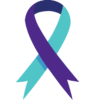-
 play_arrow
play_arrow
The real value of working in the building trades with Dave Ianucci, EAS Carpenters Chris Martin
-
 play_arrow
play_arrow
Director of Safety and suicide survivor shares how his experience is helping others in construction Building PA Podcast
-
 play_arrow
play_arrow
Construction companies win when their insurance broker is construction-centric! Building PA Podcast
- Home
- keyboard_arrow_rightMental Note: Tools and Resources to Support Workforce Wellness
Mental Note: Tools and Resources to Support Workforce Wellness


The construction industry is doing a better job of prioritizing the mental health of its workforce. Construction firms and industry associations are partnering with experts to create programs that encourage workers to recognize when they are struggling and to have the courage to seek help. That’s important because the industry has the second-highest rate of suicide of all occupations. Promoting those assistance programs is the key. With that in mind, The Keystone Contractor has compiled a guide that includes tips from experts and a list of resources. Our hope is that this information will be widely shared so that it reaches those who need help now and those who may need help in the future.
Man Therapy
A unique resource is delivering tailor-made messages to the construction industry in a light-hearted way that’s been well-received. Mantherapy.org is a website created about a decade ago that is targeted toward men. It uses a mix of humor and straight-talk — “It’s OK to cry, even when it’s not about sports” — to offer advice about mental health and wellness topics that may be difficult for men to discuss, including substance abuse, layoffs, anger management, and sleep deprivation.
“We’ve got stories of guys saying your website saved my life last night. It’s just incredible to get that kind of feedback,” said Joe Conrad, founder, and CEO of Grit Digital Health in Denver, which operates mantherapy.org. The goal is to reduce the stigma of seeking help for mental health by delivering messages in a “manly” manner. “Taking care of your mental health is the manliest thing you can do.”
The website offers free tools and advice, including a “20 Point Head Inspection,” in an anonymous fashion. Users do not have to register to use the website. Important messages are delivered in brief videos through a character, Dr. Rich Mahogany, in a skit along the lines of those done by “Saturday Night Live,” but with serious underlying messaging.
Grit Digital Health
“It’s not a joke. We use humor, and that’s how guys are. But we then turn the corner and even when we’re dealing with very sensitive topics, we talk to guys and give it to them straight,” Conrad said. Grit Digital Health recently created a series of videos with Mahagony as a construction worker, speaking to industry-specific challenges in mental health and wellness.
Construction companies that are interested in obtaining full-length videos and using the campaign, which includes related print materials, should contact Grit Digital Health. “We want companies to realize there are benefits to the company and the bottom line. Investing in the mental health of employees provides you with a safer workplace. When people shot up on time and well rested, you win. “It’s not just, ‘Let’s do this so guys don’t kill themselves.’ Let’s think about how we can help them and the whole company thrive, as well as job site benefits.”
The Mahogany Campaign
The campaign was developed at the request of Hensel Phelps Construction in Colorado, which wanted
to do more to improve the mental health and wellness of its team members. One video addresses substance abuse. It opens with Mahogany unwinding after a hard day on a job site. “After a long stressful day of trying to follow nonsensical plans, it’s nice to take the edge off with a couple of cold ones. But if you find that the beers are calling the shots, it might be time for a change. It can feel overwhelming at first. It’s like breaking ground on a new project. But you build buildings that scrape the sky. You take lumber and steel and transform them into modern marvels. You got this.”
Mahogany offers advice about finding other outlets to relieve stress, such as exercise. Employers can help their workforce manage their mental health and wellness by building a culture that values both physical and mental health and communicates to team members that “it is OK to not be OK,” said Cal Beyer, vice president of workforce risk and worker wellbeing at Holmes Murphy, an insurance brokerage firm with a national footprint based in Iowa whose specialties include construction. Beyer helped launch the mental health and suicide prevention initiative in construction in 2014 while working as a director of risk management for a contractor located in the Pacific Northwest. “Acknowledge that these are trying times and that the company cares about them and their families,” Beyer said. “Actively communicating about the importance of mental health reinforces that seeking help is a sign of strength and not a sign of weakness.”
Cal Beyer offers this advice:
How can employers help their workforce?
- Adopt a culture of well-being to combine physical health and emotional health.
- Share information about mental health for employees to share with their loved ones.
- Encourage leaders to be intentional in demonstrating care for workers by being visible and vocal about mental health and to be vulnerable about seeking help themselves or for family members.
What can be done to encourage more men to consider their mental health and wellness and seek help?
- Double down on physical health to promote well-being, including warmup exercise programs, nutrition, hydration, and stress-management skills, like deep breathing.
- Reduce barriers to care-seeking by promoting onsite wellness and health services.
- Provide training to teach informal leaders to be mental health and well-being champions and peer coaches.
- Educate workers on their employee health and welfare benefits.
What can be done to target the construction worker audience?
- Incorporate mental health and well-being into apprenticeship programs.
- Focus on reducing the frequency and severity of musculoskeletal injuries that create chronic pain, disrupt sleep, contribute to fatigue, and lead to unnecessary opioid pain management prescriptions.
- Aggressively promote Employee Assistance Programs from employers and labor unions, as well as 988 (Suicide and Crisis Lifeline and Crisis Text Line).
- Conduct Toolbox Talks on various topics relating to physical health and mental well-being topics.
- Create a custom hardhat sticker to show support for mental health.
How can workers help colleagues?
- Make a personal commitment to be a quality teammate.
- Commit to being your brother’s and sister’s keeper and adopt a mindset of no person left behind and being there for every teammate.
- Be observant and go to a co-worker to ask if they are OK when you see changes in their behavior.
- If the co-worker says they are fine, it is OK to say, “You don’t seem fine. I care about you. I have rough times, too, let me know if I can help. I’m here for you if you want to talk or need support.” If you still get the response “I’m fine,” you can reply with, “I’m worried about you, and I care too much to not say something. I want you to know that I’ve got your back when I say I do. You know you can call day or night.”

Originally published in the Keystone Contractor Magazine.
Building PA Podcast - © 2023

